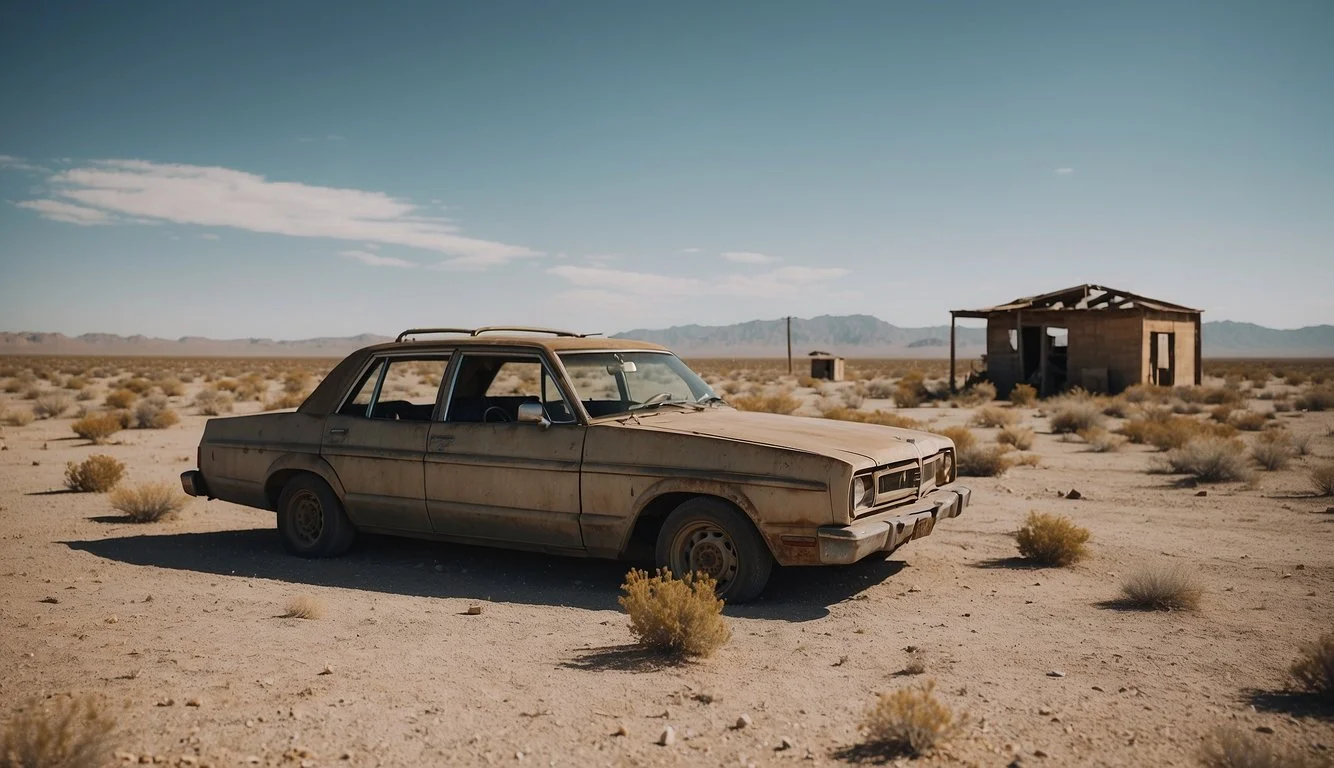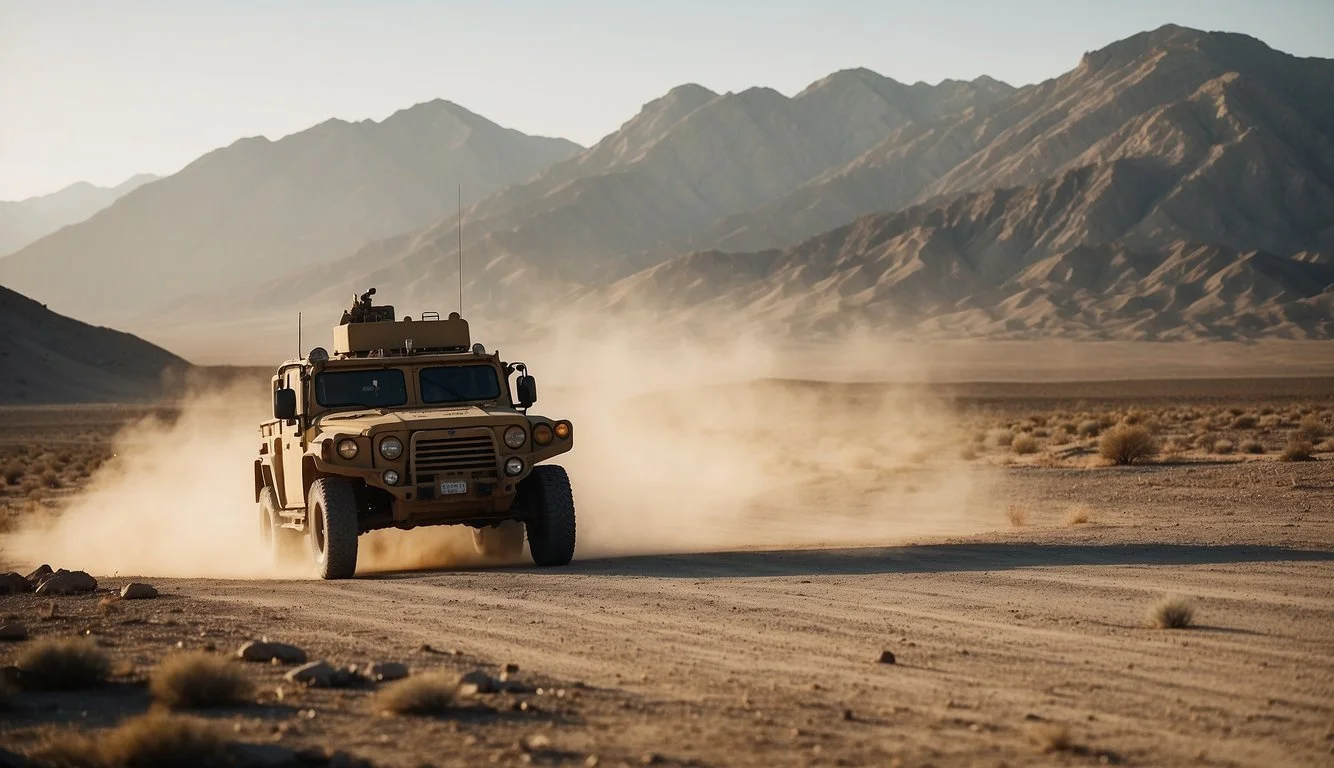Documentary Review: Cartel Land (2015)
Analyzing the War on Drugs
Matthew Heineman’s "Cartel Land" (2015) offers an unflinching look at the harsh realities of the drug war on both sides of the US-Mexico border. The documentary follows two vigilante groups: one in Arizona, aiming to keep their land free from drug traffickers, and another in Michoacán, Mexico, fighting against the violent cartels. The film’s raw portrayal of these groups' efforts brings viewers face-to-face
with the complexities and moral ambiguities of their struggles.
A standout aspect of this documentary is its visceral immediacy, achieved through immersive camerawork and the absence of expert interviews, allowing the harrowing firsthand experiences of the vigilantes to take center stage. This approach provides a stark, unfiltered insight into the individuals who have taken the law into their own hands to protect their communities.
The Mexican narrative, in particular, reveals the intricate and often brutal landscape in which these local heroes operate, highlighting the severe impact of cartel violence on everyday life. As the film unfolds, it challenges the audience to reconsider conventional notions of justice and authority, making "Cartel Land" not just a documentary but a powerful social commentary.
Overview of 'Cartel Land'
"Cartel Land" is a gripping documentary that juxtaposes two vigilante groups on either side of the U.S.-Mexico border, highlighting their struggles against drug cartels. Filmmaker Matthew Heineman employs a visceral, cinéma vérité style to immerse viewers in these parallel battles.
Synopsis
"Cartel Land" follows two main storylines. One centers on Dr. José Mireles, who leads a citizen militia in Mexico's Michoacán state against the Knights Templar drug cartel. The other features Tim "Nailer" Foley, head of the Arizona Border Recon, a group patrolling the U.S. side of the border to prevent drug trafficking and illegal immigration. The documentary captures the complexities and moral ambiguities faced by both groups as they confront cartels amidst the backdrop of law enforcement's limitations.
Filmmaker Background
Matthew Heineman, the director of "Cartel Land," is known for his immersive documentary style. Before "Cartel Land," Heineman directed "Escape Fire: The Fight to Rescue American Healthcare," which brought him recognition for his compelling storytelling abilities. "Cartel Land" further elevates his reputation, earning multiple awards and nominations, including an Academy Award nomination for Best Documentary Feature. Heineman's dedication to on-the-ground journalism provides an unfiltered look into the lives of the vigilantes and their motivations.
Documentary Genre Context
"Cartel Land" fits within the documentary sub-genre of social and political issues, specifically focusing on the drug war and its impact on society. Utilizing a cinéma vérité approach, the film prioritizes raw, unmediated footage over formal interviews and expert analysis. This technique increases the film's emotional impact by placing viewers directly in the midst of the action. The documentary aligns with other notable works in the genre, such as "Restrepo" and "The Square," by offering an unvarnished portrayal of conflict and the human stories behind it.
Production Elements
"Cartel Land" impresses with its immersive cinematography, precise editing techniques, and a compelling score complemented by intricate sound design. Each component contributes significantly to the documentary's gripping portrayal of the narcotics conflict.
Cinematography
Matthew Heineman's dual role as director and cinematographer shines through in "Cartel Land." The film’s visual style utilizes handheld camera work to bring an intense, on-the-ground perspective to the viewer. Sweeping landscape shots juxtapose against tight, intense close-ups, immersing the audience in the stark realities faced by both sides of the border conflict.
The use of natural lighting enhances the raw and gritty feel of the documentary. Night scenes are particularly striking, capturing the eerie and perilous environment in which vigilantes operate.
Editing Techniques
The editing in "Cartel Land" is meticulously crafted to maintain a high level of tension and pace throughout the film. Editor Matthew Hamachek constructs the narrative by interweaving stories of vigilante groups in the U.S. and Mexico. This technique effectively highlights the parallel struggles against drug cartels on both sides of the border.
Quick cuts and seamless transitions ensure that the viewer remains engaged. The editing also respects the gravity of the subject matter, allowing emotional moments to breathe without unnecessary embellishment.
Score and Sound Design
The score and sound design are pivotal in setting the film’s emotional tone. H. Scott Salinas’s musical score fluctuates between haunting melodies and tense rhythms, perfectly complementing the on-screen action. The use of silence at strategic moments amplifies the sense of suspense and danger.
Sound design enhances authenticity. Ambient sounds, such as distant gunshots, rustling leaves, and muffled conversations, ground the documentary in its setting. This meticulous attention to audio detail makes the viewing experience both visceral and immersive.
Themes and Messaging
"Cartel Land" explores the complex themes of moral ambiguity in vigilantism, the brutal portrayal of drug cartels, and the profound impact of violence on communities. These elements woven throughout the film reveal the intricate layers of Mexico's drug war.
The Moral Ambiguity of Vigilantism
"Cartel Land" presents vigilante groups in both Mexico and the United States. These groups operate outside the law, fighting against the perceived failures of government institutions. The film shows the blurred lines between heroes and villains, highlighting how noble intentions can be compromised by personal agendas and corruption.
The leaders of these groups, while initially seeming to serve justice, often face ethical dilemmas. They must navigate their own sense of morality against the backdrop of lawlessness. This tension illustrates the precarious nature of taking the law into one’s own hands.
Portrayal of Drug Cartels
The film provides an unflinching look at the operations and influence of drug cartels. Through visceral footage and encounters, it captures the terror and control these organizations exert over regions in Mexico.
Matthew Heineman’s documentary does not shy away from showing the human cost of the drug trade. It exposes the brutality and violence inflicted upon civilians, revealing the cartels' deep entrenchment in local communities. This portrayal underscores the pervasive and relentless nature of cartel violence.
Impact of Violence on Communities
"Cartel Land" delves into how ongoing violence affects both rural and urban communities. The incessant conflict leads to a breakdown of social structures and instills a pervasive sense of fear among residents.
The film illustrates the disruption of daily life and the psychological toll on individuals. Families are torn apart, and mistrust becomes rampant. The film’s depiction of these impacts offers a stark reminder of the human suffering underlying the broader political and criminal landscape.
By focusing on real-life experiences, "Cartel Land" underscores the urgent need for effective solutions to address the root causes of violence and restore stability to affected areas.
Critical Reception
"Cartel Land" (2015) received a mix of acclaim and debate within the film community. It earned several awards and strong reviews for its raw portrayal but also faced scrutiny over its narrative approach and subjects.
Awards and Recognition
"Cartel Land" garnered significant praise, reflected in its accolades. At the 2015 Sundance Film Festival, it won the U.S. Documentary Special Jury Award for Cinematography and the U.S. Documentary Directing Award.
The film was also nominated for an Academy Award for Best Documentary Feature, showcasing its impact.
Additionally, Rotten Tomatoes reports a 90% approval rating based on 69 reviews, indicating widespread positive reception among critics.
Critiques and Controversies
Critical opinions highlighted the film's intense and immersive storytelling, yet some pointed out its shortcomings. The depth of its characters was questioned in some critiques.
There were concerns about the editing, suggesting that it might have lost some depth in the narrative.
The film's portrayal of vigilantism straddles complex ethical issues, prompting debate among audiences regarding the implications of taking the law into one's own hands.
Cultural and Social Impact
"Cartel Land" has left a significant mark on both public perception of the drug war and the documentary filmmaking landscape. It vividly portrays the brutal realities of drug cartels and vigilante justice, compelling viewers to engage with complex social issues.
Influence on Public Perception
"Cartel Land" has profoundly influenced how audiences perceive the drug war in both Mexico and the United States. By offering an unfiltered look at the lives of vigilante groups, the film highlights the desperate measures ordinary people take to combat cartels. This gripping depiction prompts viewers to question the efficacy of traditional law enforcement and the real-life impacts on communities involved.
The documentary provides a stark contrast between the vigilantism seen in Mexico and Arizona, fostering nuanced discussions about the morality and effectiveness of such actions. These portrayals have sparked conversations about border policies, government corruption, and the human cost of drug trafficking. The immediacy and visceral nature of the footage make the complexities of the drug war accessible and urgent to a broad audience.
Contribution to Documentary Filmmaking
Matthew Heineman's approach to storytelling in "Cartel Land" has been highly influential in documentary filmmaking. By serving as one of his own cinematographers, Heineman captures raw and intense moments that bring viewers directly into the action. This method of immersive journalism has set a new standard for how documentaries can convey reality without the need for narrations or expert interviews.
His small crew and intimate filming style allow for a more personal and immediate connection with the subjects. This style has been praised for its ability to convey depth and authenticity. The balance of direct cinema techniques and ethical storytelling used in "Cartel Land" has inspired other filmmakers to adopt similar methods, pushing the boundaries of documentary film as an art form and as a tool for social change.
Conclusion
"Cartel Land" provides an immersive look into the world of vigilante groups fighting drug cartels.
Director Matthew Heineman captures the tension and complexity on both sides of the border. In Mexico, Dr. José Mireles emerges as a hero leading Autodefensas. His journey highlights the challenges faced in a state engulfed by violence.
The U.S. segment focuses on Tim "Nailer" Foley and his Arizona Border Recon. Their efforts reflect the desperation of citizens attempting to combat drug trafficking in their own ways.
Both stories are interwoven, offering a raw, unfiltered perspective. The documentary avoids using expert interviews, instead choosing to show events as they unfold. This approach lends it an immediacy that is both gripping and revealing.
Cinematography plays a crucial role. The visuals capture the stark realities of life on the frontlines. Scenes of conflict, daily struggles, and the personal motivations of vigilantes are vividly brought to life.
Despite its intense subject matter, the film maintains a steady pace. It neither glamorizes nor demonizes its subjects. Instead, it aims to present a balanced view, allowing viewers to form their own opinions.
"Cartel Land" is compelling in its exploration of vigilantism. It highlights the blurred lines between justice and lawlessness. Throughout the film, the moral ambiguity faced by those fighting cartels is evident.
In summary, "Cartel Land" is a thought-provoking documentary. It raises important questions about the effectiveness and consequences of taking the law into one's own hands. For anyone interested in understanding the complexities of the drug war, this film offers valuable insights.





